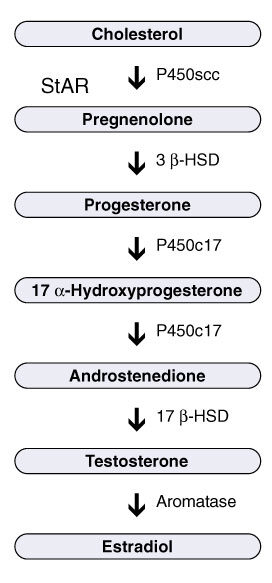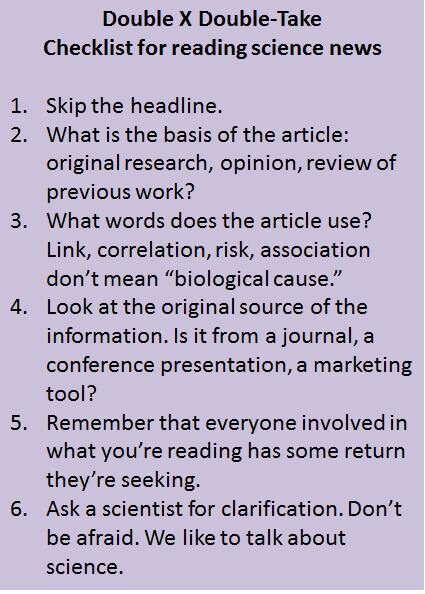Emily Willingham www.emilywillinghamphd.com When news broke that the autism spectrum categories of Asperger’s disorder and Pervasive Developmental Disorder-Not Otherwise Specified (PDD-NOS) would get subsumed into the wider maw of a general “autism disorder,” people worried. They worried about autistic people who are quite verbal or who have typical cognitive skills. What would happen to individuals whose autism doesn’t manifest in those terms as profound? The biggest concern was a new category for the Diagnostic and Statistical Manual of Mental Disorders (DSM)-5, social communication disorder. Would people like my son, diagnosed with Asperger’s and whose autism includes echolalia, anxiety, motor deficits, repetitive behaviors, learning differences, and other features well beyond the social, get rolled into what looks like a flimsy, catchall not-safety net of “social communication disorders”? And what other kind of communication is there if not social? Based on early reports, the concerns were legit. One alarming presentation at a…
Tag: Emily Willingham
Emily Willingham www.emilywillinghamphd.com Word on the street — well, really on a blog from a researcher — is that the writer of the autism/inflammation New York Times op-ed, Moises Velasquez-Manoff, is working on an “annotated” version of the article that will “back up” his claims.” Some annotation would have been useful to begin with; as I noted in my analysis of that op-ed, in many instances, discerning the origin of his information was difficult or impossible. I understand that something that appears originally in print can’t have hyperlinks to appropriate references, but the writer certainly could have beefed up in-text citations (author names, journal publications), at least avoiding the criticism that the piece was unsatisfactorily sourced. Sourcing was not the only issue with that piece, however. Velasquez-Manoff has a book to sell, and that book, like many popular science books, has a narrative that may not necessarily stand up to…
Emily Willingham www.emilywillinghamphd.com Recent headlines have trumpeted an FDA-approved clinical trial of cord blood-derived stem cells for autism, involving 30 children and two i.v. infusions of cells from each child’s own banked cord blood. The stated rationale is a link between inflammation and autism, but I, for one, find that rationale spurious. The inflammation-autism concept found its footing in part thanks to a study that appeared in 2005 [open access] and described findings linking inflammation in the post-mortem brain and autism. The researchers, based at Johns Hopkins, had examined donated brains from 11 people with autism, six of whom were children, and in particular found evidence of what they called an “inflammatory process” in the cerebellums of brains from autistic people. The autistic group in this study was highly heterogeneous in terms of ages, causes of death, and the presence of epilepsy. The Hopkins work and a handful of other…
Emily Willingham www.emilywillinghamphd.com Much of what I saw at IMFAR (self-selected, obviously) focused on assessing sex hormone differences or the presumed outcomes of such differences in autistic vs non-autistic populations. As the Father of the Extreme Male Brain Hypothesis that androgen levels relate to autism, Simon Baron-Cohen appeared as senior author on several posters in this subject area and also gave a talk on the same topic. While he is possibly best known in a negative light in autism circles for his tautological “autistic people do poorly on my empathy test ergo autistic people lack empathy” ideas, what I discuss below is not related to that, at all. It’s all about the steroid hormones during development in the womb, and I found it fascinating — again, self selection as someone whose research focus was hormones during development. I’m not the only TGPA editor to have an interest in the link…
Emily Willingham biologyfiles.fieldofscience.com Last week we became aware that a protocol for “treating” autism, called MMS (Miracle Mineral Solution), was presented at the most recent AutismOne conference. The convoluted science behind this “solution” would be enough to turn many people off, but the actual “treatment” is so abhorrent we wanted to make sure that people know the background of MMS. Warning: the links in this post may be a trigger because many of them point to communities that equate autism with damaged goods. -JBM AutismOne has a history of providing a platform for dubious “practioners” to showcase potentially harmful wares to a willing audience. The peddlers at this conference are no different from any other pseudoscience-pusher, including the fact that they are more than willing to take advantage of the pop culture fascination with autism, and induce a gullible audience to part ways with their money, regardless of how ineffectual,…
Emily Willingham www.ThinkingAutismGuide.com Caveat: All findings discussed here were presented at a conference and have not undergone peer review. —- What is the use of animal models? I understand the use of animal models like mice to figure out how gene changes affect outcomes in a whole animal, rather than, say, in cells in a dish. I’ve used them myself. Knocking out a gene of interest in a mouse strain, applying an environmental exposure of interest, observing the behavior of the mouse involved — these tactics can be revealing, sometimes. Say a mouse with a nonfunctioning partner in a gene pair shows a specific behavior — like vocalizing less to its mother — and maybe we can interpret that in human terms as being inhibited social communication and assume the gene in question is involved. The idea is that observing changes linked to the absence or overabundance of a particular…
Can’t make IMFAR? Don’t worry, four of our TPGA editors are covering the International Meeting for Autism Research in Toronto, Canada, from Wednesday May 16 through Saturday May 19. Reporting starts with today ‘s 11 AM ET press conference (assuming Shannon & Jen make their flight, which has been delayed, eep — stand by). Panel & presentation coverage will be posted here www.thinkingautismguide.com, via Twitter, and of course on the TPGA Facebook page. Follow us on Twitter at @thinkingautism, @jennyalice, @aspieadvocate, @ejwillingham and @shannonrosa. And if you’re at IMFAR, you can also buy our books at the Autism Science Foundation table — 100% of sales benefit the ASF. If you see one of us, say hi! Science devotees out!
Emily Willingham doublexscience.blogspot.com Natural News recently resurrected an OLD study about “monkeys with autism” that, when it came out two years ago (for the second time), was so egregious that many autism/science bloggers tore it to pieces. That hasn’t stopped Natural News from presenting it as “new.” So, we are running science editor Emily Willingham’s original reaction to the study, below. We also encourage you to read editor Liz Ditz’s overview of the entire history of this “study.” I was sitting across from a friend today at a picnic table when she received an email on her smart phone. A local parent who disseminates all manner of autism-related information and misinformation had circulated an email with a SafeMinds headline asserting that “scientific evidence” had emerged linking autism, vaccines, and mercury. Suppressing the impulse to hurl all over the beach towels at the prospect of yet another mole to whack (or,…
Emily Willingham doublexscience.blogspot.com www.ThinkingAutismGuide.com Handy short-form version. [image: Light purple vertical rectangle, with black text reading: Double X Double-Take Checklist for reading science news 1. Skip the headline. 2. What is the basis of the article: original research, opinion, review of previous work? 3. What words does the article use? Link, correlation, risk, association don’t mean “biological cause” 4. Look at the original source of the information. Is it from a journal, a conference presentation, a marketing tool? 5. Remember that everyone involved in what you’re reading has some return on what they’re seeking. 6. Ask a scientist for clarification. Don’t be afraid. We like to talk about science.] You’ve probably seen a lot of headlines lately about autism and various behaviors, ways of being, or “toxins” that, the headlines tell you, are “linked” to it. Maybe you’re considering having a child and are mentally tallying up the various risk factors…
Emily Willingham biologyfiles.fieldofscience.com We began by failing our son, TH. We failed to be vigilant enough about his reputation. We were lax in monitoring the growing perception of him as a bully, while simultaneously, he was on the receiving end of bullying all day, every day. His reputation as a bully spread beyond the school walls and playground boundaries, leaking into our neighborhood, speeding through wires and wireless, the talk of the bus stops. His size, his odd behaviors, his loud and unexpected non-sequiturs, and his violations of personal space drove the rumors on. When we learned all of this, we were devastated. Then, we heard about the Circle of Friends (COF) program. The basic principle of this program is that placing knowledge in the hands of others also means giving them understanding and compassion. For us, that meant that somehow, we had to get across to our son’s classmates,…

